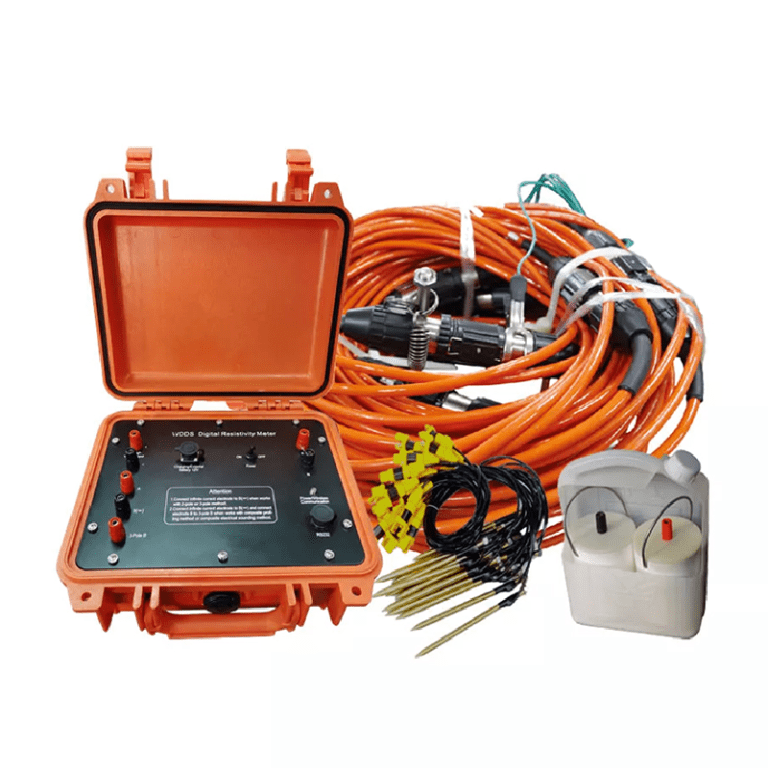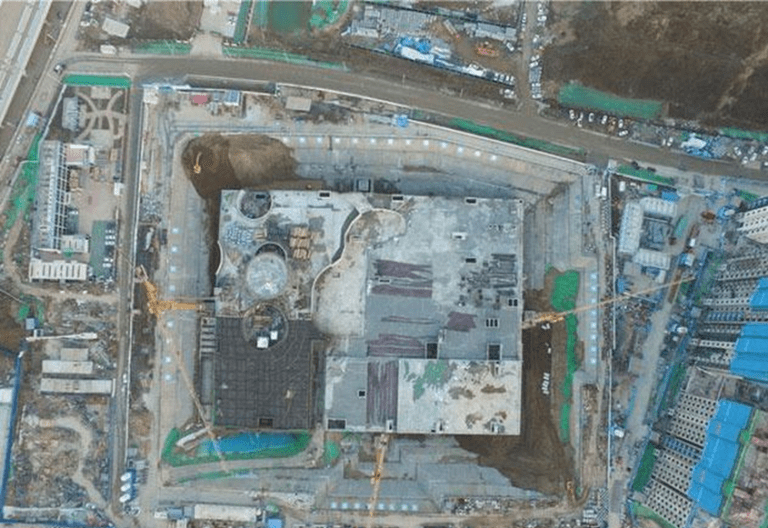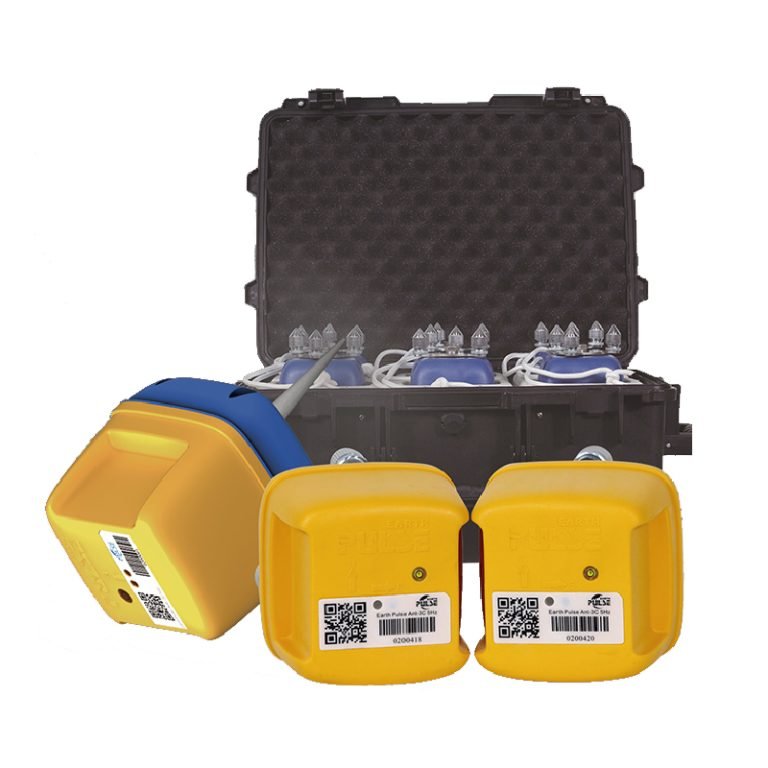Welcome to Geotech!

Application of Proton magnetometer enables high-precision solution for Xichang iron ore exploration
- Cases, Mineral Survey Cases
- 15 views
Description
Application of Proton magnetometer enables high-precision solution for Xichang iron ore exploration
In the realm of resource exploration, precise and efficient detection technologies are vital drivers of industry advancement. The Xichang area, with its intricate geological structures and abundant mineral resources, has become a focal point for geological exploration. This article delves into the exceptional performance of the JPMG proton magnetometer in iron ore prospecting in Xichang, revealing how it aids geologists in surmounting exploration challenges and boosting prospecting efficiency.

Challenges and Demands of Iron Ore Prospecting in Xichang
Located in the northwest of the Yunnan – Guizhou Plateau, Xichang features complex geological conditions. The primary ore – bearing layer is a volcaniclastic rock lens. The ore bodies are typically stratiform, sub – stratiform, lenticular, etc., and gradually transition into the surrounding rock. These geological characteristics impose high demands on iron ore prospecting technologies, as conventional medium – or low – precision magnetic survey methods often fall short in providing sufficient magnetic field data for accurate prospecting.

JPMG Proton Magnetometer: A High – Precision Magnetic Survey Tool
The JPMG proton magnetometer, launched by Shenzhen Huafley Technology Co., Ltd., is a high – performance geophysical exploration device with remarkable advantages.

High Precision and Stability
- High – Precision Measurement: Equipped with a high – precision oven – controlled crystal oscillator (OCXO), it ensures a magnetic field measurement accuracy of ±0.1nT and a resolution of 0.01nT, capturing subtle magnetic field variations and offering ample magnetic field data for iron ore prospecting.
- Stable Performance: The built – in high – precision OCXO guarantees stable measurements in harsh field environments, minimizing errors from temperature changes and ensuring data reliability.
Robust Data Acquisition and Processing Capabilities
- Large – Capacity Storage: With 32M of memory, it stores vast measurement data, meeting the needs of extended and large – scale exploration.
- Efficient Data Transmission: Data can be exported to computers or other storage devices via USB or a 10 – pin waterproof RS – 232 serial port, facilitating subsequent data processing and analysis.
- Real – Time Data Display: The host screen displays real – time magnetic field observations, enabling field personnel to instantly view results and make timely adjustments.
Versatile Operating Modes
- Mobile Mode: Suitable for quick scans over large areas with continuous observation profiles.
- Base Station Mode: Conducts diurnal variation observations, providing reference data for mobile measurements to eliminate diurnal interference and enhance accuracy.
- Gradient Mode: Two probes observe simultaneously at controlled intervals, obtaining high – quality gradient values to effectively distinguish magnetic ore bodies of different depths and morphologies.
Application in Xichang Iron Ore Prospecting
Project Overview and Objectives
The Xichang iron ore prospecting project aimed to define anomalous body boundaries and predict magnetic iron ore locations through high – precision magnetic surveys, providing a scientific basis for follow – up exploration and mining.
Survey Network Layout and Data Acquisition
- Survey Network Layout: The geophysical survey was at a scale of 1:5000, with 25 high – precision magnetic survey lines designed. The line spacing was 100m, the point spacing was 20m, and each line was 1.6km long, covering a total area of 4km².
- Point Positioning: Baseline measurement used a lightweight GPS with a positioning accuracy of 4m, ensuring accurate and reliable measurement points.
- Data Acquisition: Using the JPMG proton magnetometer, total field intensity T was observed. Repeat observations were made at anomalies and distorted points. Diurnal variation observation was conducted with the same – type, high – performance instrument on a fixed benchmark, with a sampling time of 20 seconds.
Data Processing and Interpretation
- Data Processing: The collected data underwent professional processing, including correction, filtering, and upward continuation, to eliminate interference and extract useful magnetic field information.
- Result Interpretation: Surfer 8.0 software created contour maps, visually presenting magnetic anomaly distribution. Six magnetic anomalies were identified and evaluated, with M1 – M4 showing large scale and intensity, indicating favorable ore – forming conditions. M1 was likely linked to magnetite.
Value Brought by the JPMG Proton Magnetometer
Improved Prospecting Efficiency
- The JPMG proton magnetometer is portable and easy to operate. It enables rapid large – area magnetic surveys without extra cost or difficulty, enhancing prospecting efficiency and reducing labor intensity.
Enhanced Prospecting Accuracy
- With high – precision magnetic measurement and advanced data processing and interpretation, it accurately defines anomaly boundaries and predicts magnetite locations, offering strong technical support for iron ore prospecting. This significantly improves the accuracy and success rate of prospecting.
Adaptability to Complex Geological Conditions
- Despite Xichang’s complex geology, the JPMG proton magnetometer performs well. Its strong anti – interference and stability ensure reliable data acquisition in mountainous and forested areas, addressing challenges in complex geological exploration.
Strong Data Reliability
- Through diurnal variation observation and synchronized measurements between base and mobile stations, it eliminates diurnal interference, ensuring accurate and reliable data. This provides a solid foundation for subsequent analysis and interpretation, making prospecting results more credible.
Conclusion
The successful application of the JPMG proton magnetometer in the Xichang iron ore prospecting project highlights its advantages in geological exploration. Its high precision and stability have brought unprecedented convenience to iron ore prospecting. As technology advances, the JPMG proton magnetometer will play a more significant role in geological exploration projects, contributing more to mineral resource development and utilization.
FAQ
The double tap has a large current and can be used for IP testing to get more accurate data.
High-density apparent resistivity method is an array prospecting method, also known as automatic apparent resistivity system, which is developed from direct current method. Its function is equivalent to the combination of quadrupole sounding and electrical profiling method. The artificial electric field is formed by supplying electricity to the underground through electrodes. The distribution of the electric field is closely related to the distribution of the resistivity of the underground rock and soil medium. By measuring the artificial electric field at different parts of the surface, the distribution of the apparent resistivity of the underground medium is understood, and the underground geological structure is inferred and interpreted based on the distribution of the apparent resistivity of the rock and soil medium.
The principle of high-density electrical method is the same as that of traditional resistivity method. It is a combination method of multiple devices and multiple pole distances that integrates electrical depth sounding and electrical profiling method, which can obtain the conductivity characteristics of two-dimensional underground media. It has the characteristics of multi-device data acquisition in one pole arrangement, and highlighting abnormal information by obtaining ratio parameters, which greatly increases the amount of collected data, improves work efficiency, and ensures the accuracy and reliability of the pole running process.
This method is particularly sensitive to the water content of the surrounding rock. If the surrounding rock is broken and contains water, its apparent resistivity is significantly reduced. The apparent resistivity of intact and hard rock and soil is significantly higher than that of the surrounding rock in the fault zone or broken zone and water-rich zone. This method has a clear principle and intuitive images. It is a geophysical method with high resolution. In recent years, with the improvement of computer data acquisition technology, the exploration efficiency has been greatly improved, the coverage area and detection depth of the profile have been increased, reliable data can be obtained in a strong interference environment, the signal-to-noise ratio has been greatly improved, and the geological body can be accurately detected. This method has been widely and successfully applied in engineering and hydrogeological exploration and exploration of mineral and water resources.
(1) Application in coalfield and mine goaf detection
(2) Non-destructive detection of termite nests in dam foundations
(3) Karst and foundation surveys of railways, roads and tunnels
(4) Delineation of stratum lithology boundaries
(5) Survey of the leakage range of landfills
(6) Ancient tomb surveys
(7) Detection of sewage pipes
(8) Non-destructive testing of leakage in reservoirs and river dams
(9) Detection of bedrock fracture zones
(10) Soil salinity and water quality surveys
(11) Detection of ancient tunnels, air-raid shelters, metal burial sites, etc.
(1)The high-density resistivity method is based on the resistivity method, so it is suitable for all underground explorations with obvious conductivity differences;
(2)Any medium underground will have a weak polarization potential at the moment of power on and off, which will affect our measurement of the true potential difference. When the electrode distance is small, the loop current is large, which has little effect on the measurement results; when the electrode distance is too large, the interference potential is close to the effective potential, which has a greater impact on the measurement results. Therefore, due to the influence of the power supply electrode distance, the exploration depth cannot be too large, generally within 100m. When the conductivity of the soil medium is good, it can be appropriately increased, and the exploration depth in the soil medium with poor conductivity is appropriately smaller;
(3)It is generally less used in cities, near large transmission lines, etc. due to site restrictions and industrial stray current interference; 4. In areas such as concrete pavements and exposed bedrock surfaces, it is also less used due to the difficulty of electrode layout.
-1.png)




